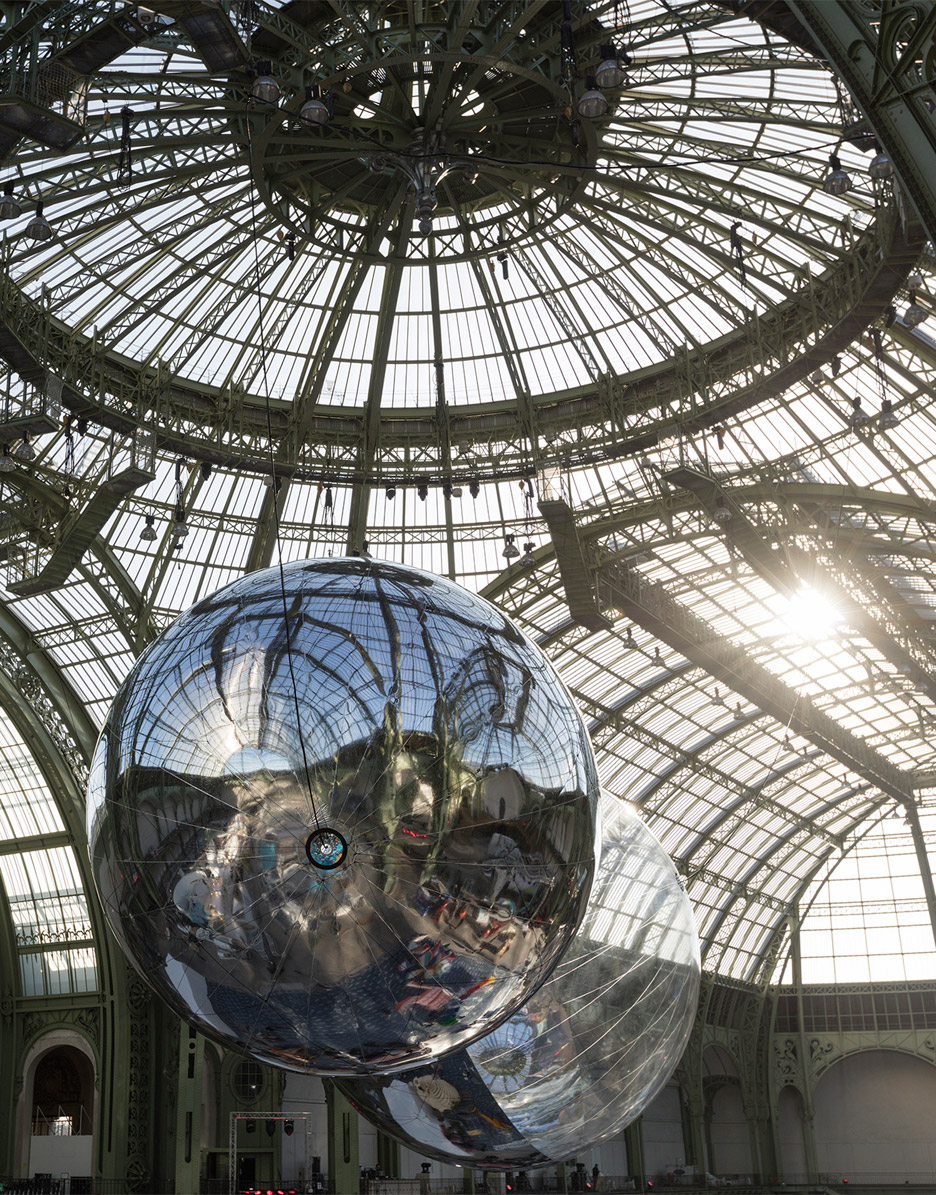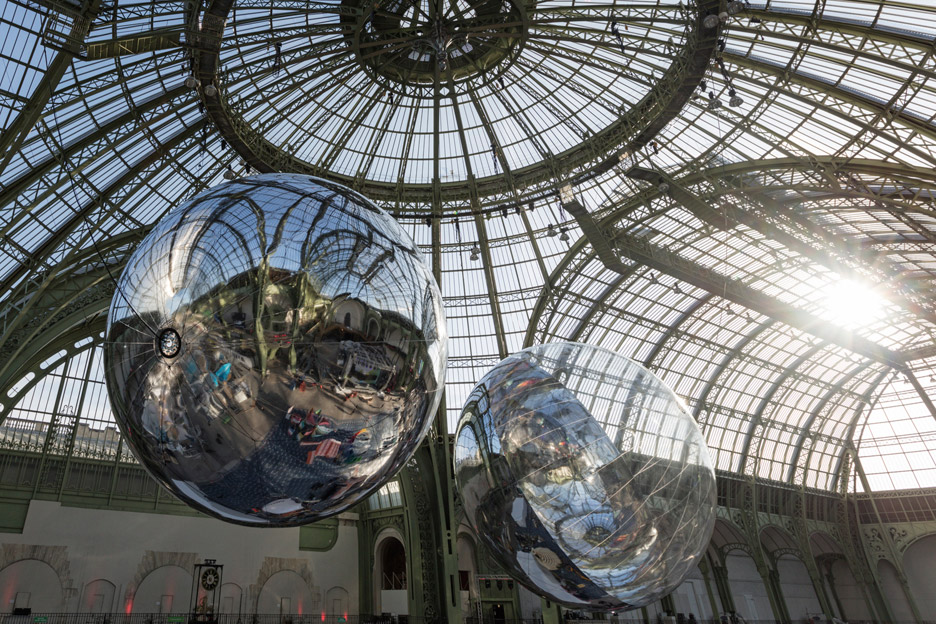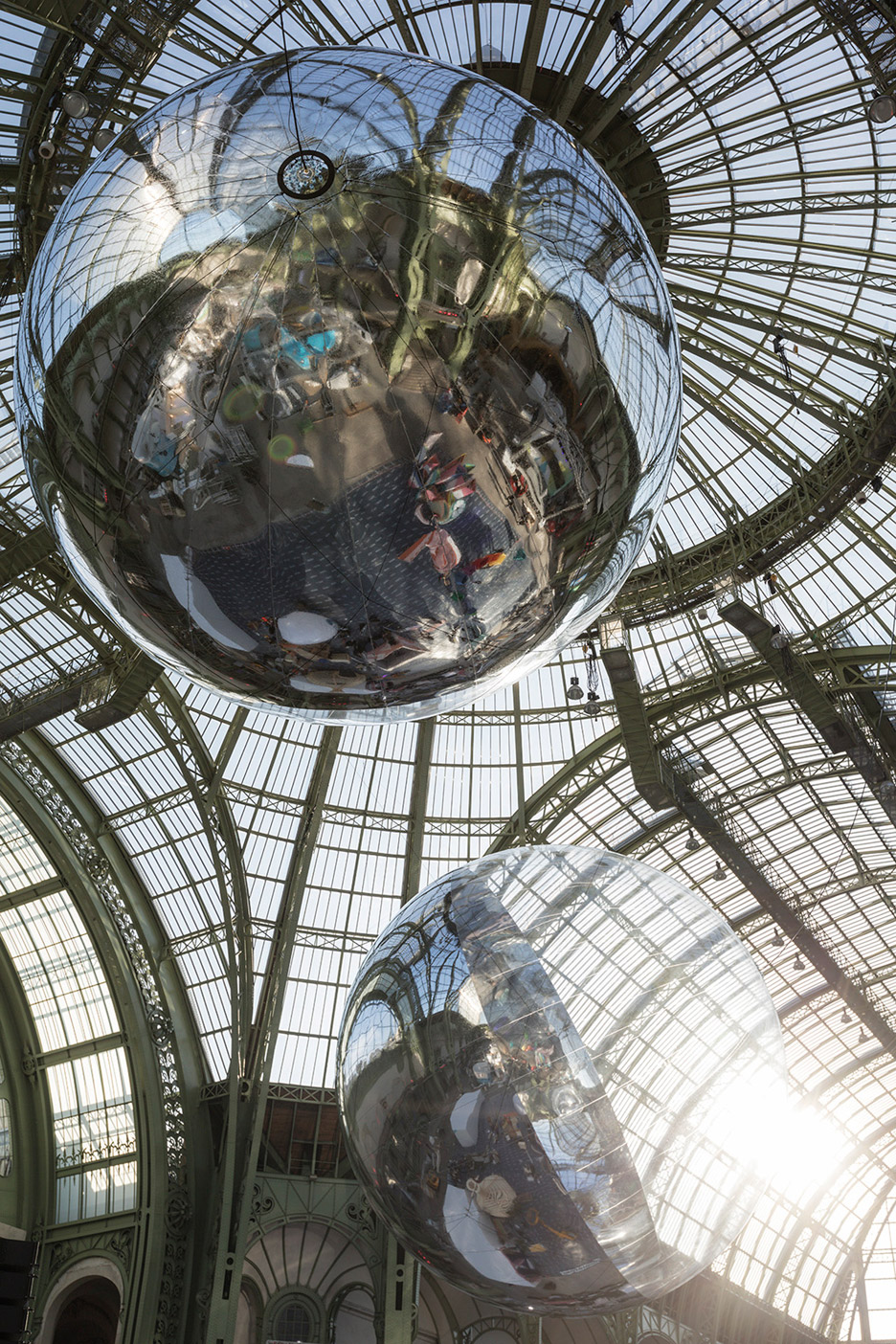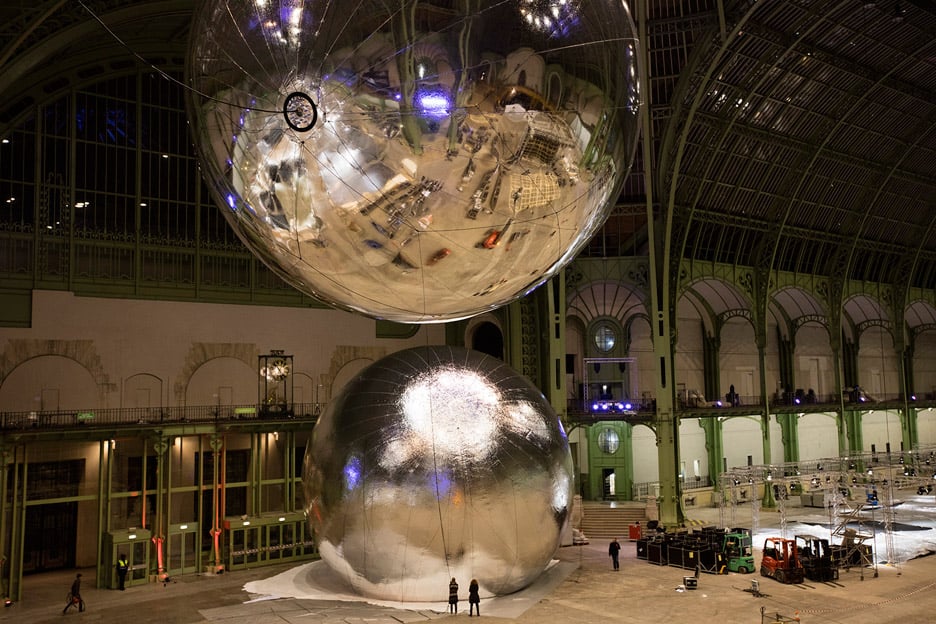Tomás Saraceno installs Aerocene metallic orbs in Paris' Grand Palais
Argentinian artist Tomás Saraceno has created a pair of air-filled globes that he eventually plans to sail across the sky.
The Aerocene prototypes are completely engine-free, and would rely only on heat and air currents to stay aloft. Each sphere is made from a thin layer of foil, with one half of the globe transparent and the other half reflective.

According to the artist, the spherical structures would be kept up by air heated by the sun during the day, and by warm air generated by the Earth's infrared radiation at night.
They form an early stage of Saraceno's plans to embark on the first air-powered trip across the planet, which he intends to complete without relying on fuel or engines.
"I have been working on these sculptures and on the idea that it is possible to fly around the world many times without fuels, hydrocarbons, helium, solar panels or batteries," the artist told Dezeen.

By releasing hot air from inside the Aerocene globes, pressure can be regulated and the altitude of the orbs can be controlled. They could also float along natural jet streams, using these as a way of changing direction.
"Aerocene begins now as a past-becoming-future technology," said Saraceno. "In the near future, it will define the age of the post-fossil-fuel travel, a pace of living that is in tune and at the whim of the wind."

The sculptures were installed at the Grand Palais in Paris during the United Nations Climate Change Conference earlier this month, in order to raise awareness of the world's reliance on fossil fuels, and propose an alternative method of travel.
After exhibiting, Saraceno intends to test the prototypes on an expedition to Bolivia's Uyuni salt lake – the largest in the world. He's also seeking partners to help send Aerocene on its first round-the-Earth flight.
"It has been a long road that brought Aerocene project to Grand Palais: full of tests, mistakes and corrections, collaborations and suggestions," the artist told Dezeen.

"Everybody who has worked on this project and its realisation has taken a fundamental part in its success," he added.
"Every time we tried to make the sculptures fly, we learned more about them, and about the jet streams, the wind, the atmosphere, the stratosphere. And we are still learning, it is a continuous research."
French designer Mathieu Lehanneur also completed installations for the conference, creating solar-powered street furniture that resembled giant clover leaves on stems.